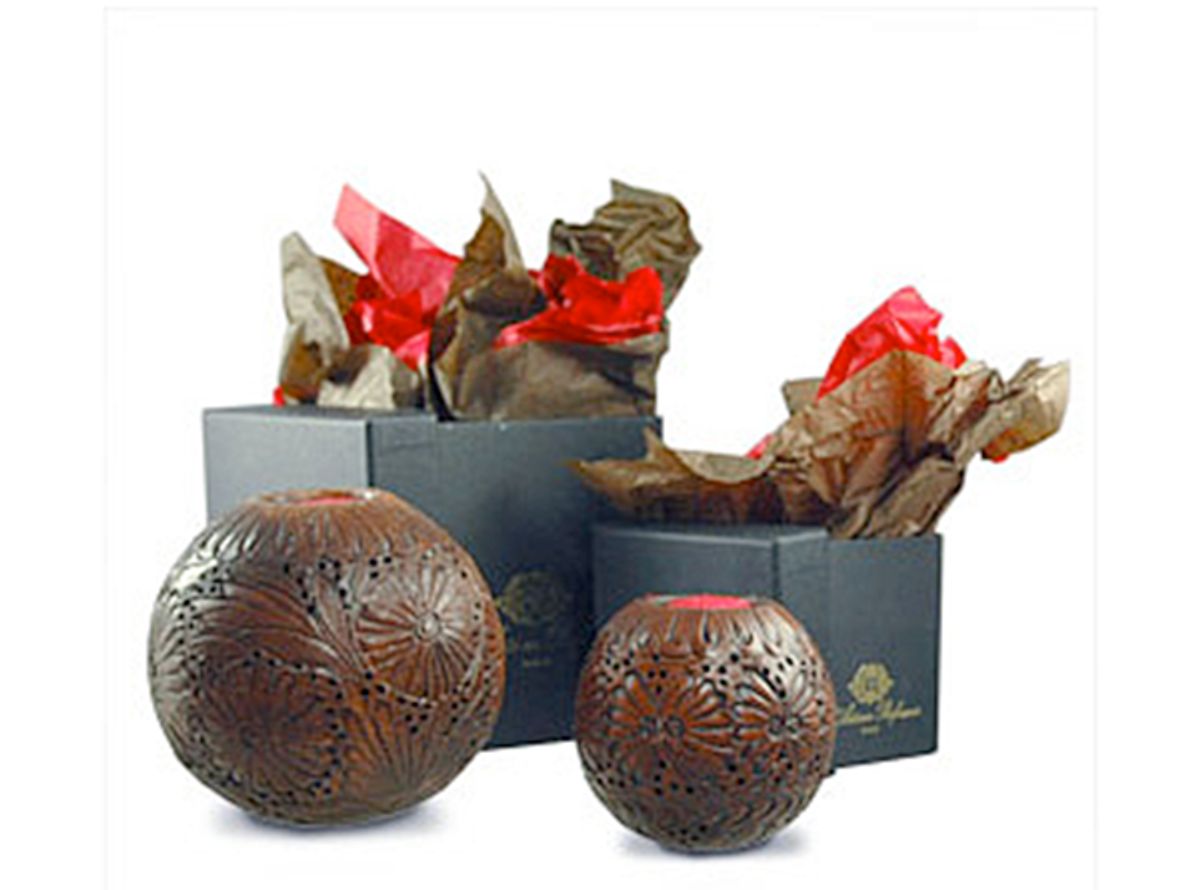Sandalwood oil, with its rich, woody scent, has been cherished for centuries for its multifaceted benefits and uses. From its deep roots in cultural traditions to its modern-day applications in aromatherapy and skincare, sandalwood oil’s soothing elegance is a testament to its timeless appeal. This article delves into the world of sandalwood, exploring its origins, scent profile, therapeutic properties, everyday uses, and the importance of sustainable practices in its production.
Key Takeaways
- Sandalwood oil is extracted from the heartwood of the sandalwood tree and is highly valued for its aromatic and therapeutic properties.
- Its complex scent profile, characterized by warm, rich, and woody notes, makes it a favorite for blending with other fragrances and promoting mental and emotional well-being.
- The oil boasts numerous health benefits, particularly in skincare, where it is known for its soothing and anti-inflammatory effects, as well as in stress relief and relaxation.
- Beyond health, sandalwood oil is integrated into daily life through personal care products, home fragrances, and in various cultural rituals and ceremonies.
- Sustainable and ethical sourcing of sandalwood is crucial for its future, with conservation efforts and innovations in cultivation playing a key role in preserving this precious resource.
The Essence of Sandalwood: Origins and Extraction
Tracing the Roots: The Sandalwood Tree
The sandalwood tree, known scientifically as Santalum, is a genus that boasts a rich history intertwined with cultural and spiritual practices. Revered for its aromatic heartwood, sandalwood has been cherished across various civilizations for centuries.
Sandalwood trees are slow-growing species, taking up to 40 to 80 years to reach full maturity, which is when the heartwood’s essential oils are at their peak. This slow growth contributes to the wood’s dense composition and its oil’s potent fragrance.
Sandalwood’s deep roots are not just physical, but symbolic, representing a connection to the earth and an anchor in tradition.
The following table outlines the primary species of sandalwood and their native regions:
| Species | Native Region |
|---|---|
| Santalum album | India |
| Santalum spicatum | Australia |
| Santalum austrocaledonicum | Pacific Islands |
Each species has its unique characteristics and uses, but all share the commonality of the sought-after sandalwood oil, which is extracted from the heartwood.
From Tree to Treasure: Extraction Methods
The transformation of the sandalwood tree into the coveted sandalwood oil is a meticulous process that captures the essence of the tree’s aromatic gifts. Steam distillation is the most traditional and widely used method, where steam is passed through the wood to release the oil, which is then condensed and collected. Another method is solvent extraction, which uses a chemical solvent to dissolve the aromatic compounds, later separated from the solvent to obtain the oil.
Supercritical fluid extraction is a more modern technique that employs supercritical carbon dioxide to extract the oil. This method is known for its efficiency and the high purity of oil it produces. Each method has its own set of advantages and challenges, and the choice often depends on the desired quality and use of the oil.
The quality of sandalwood oil is paramount, and the extraction method plays a crucial role in determining its therapeutic and aromatic properties.
Purity and Potency: Evaluating Sandalwood Oil Quality
The quest for the highest quality sandalwood oil is not just about the allure of its fragrance; it’s about harnessing the full therapeutic potential of the oil. Purity and potency are the cornerstones of sandalwood oil’s efficacy, and discerning these qualities requires a keen understanding of various factors.
Purity is often assessed through a combination of sensory evaluation and scientific analysis. A pure sandalwood oil should have a clear, woody base note, free from any artificial or off-putting odors. Potency, on the other hand, is determined by the concentration of the oil’s active compounds, primarily the sesquiterpenes that are responsible for its distinctive scent and therapeutic properties.
To ensure you’re getting the best quality sandalwood oil, look for suppliers who provide detailed information about the oil’s origin, extraction method, and chemical composition.
Evaluating the quality of sandalwood oil can be broken down into the following steps:
- Verify the botanical species and origin of the sandalwood.
- Check for the method of extraction used, as steam distillation is preferred.
- Review any available chromatography reports to confirm the chemical profile.
- Assess the oil’s color, consistency, and scent.
- Look for certifications or quality seals from reputable organizations.
Aromatic Alchemy: The Scent Profile of Sandalwood Oil
Decoding the Fragrance: Notes and Nuances
Sandalwood oil, known in some cultures as Sande Ka Tel, is celebrated for its complex scent profile that captivates the senses. The primary notes of sandalwood oil are woody, rich, and creamy, with subtle hints of earthiness and a touch of sweetness that rounds out the fragrance.
The scent of sandalwood oil can be broken down into top, middle, and base notes, each contributing to the oil’s distinctive aroma:
- Top notes: These are the initial, light scents that are perceived first. They tend to be more volatile and dissipate quickly.
- Middle notes: Also known as the heart notes, they serve as the main body of the scent and emerge just after the top notes.
- Base notes: These are the deep, heavy scents that linger the longest and provide the foundation for the fragrance.
Sandalwood oil’s ability to blend seamlessly with other fragrances makes it a favorite among perfumers and enthusiasts alike. Its versatility allows it to enhance the overall bouquet without overpowering the senses.
While sandalwood oil is widely appreciated for its aromatic qualities, it is also important to recognize its therapeutic properties. It not only nourishes the skin and promotes hair growth but also provides relief from pain. However, as with any potent essence, it is crucial to use sandalwood oil with caution to avoid potential side effects.
The Art of Blending: Complementary Scents
Sandalwood oil’s rich, woody base makes it a favorite in the art of scent blending. Its deep and creamy notes serve as a perfect foundation for a variety of fragrances, creating a harmonious balance that can enhance the overall aroma of a blend. Boldly, sandalwood stands as a versatile player in perfumery, pairing well with a multitude of scents ranging from floral to citrus, and spicy to sweet.
When blending sandalwood oil with other essential oils, it’s important to consider the scent profile of each component. Here’s a simple guide to some complementary scents:
- Floral notes like lavender, rose, and jasmine bring out the sweet undertones of sandalwood.
- Citrus scents such as bergamot and lemon add a refreshing zing that contrasts beautifully with its warmth.
- Spicy elements like clove or cinnamon can amplify the exotic and sensual side of sandalwood.
- Sweet aromatics like vanilla or benzoin soften the woodiness, creating a comforting and inviting fragrance.
The Blended Diffuser Oil Mysore Sandalwood captures the soothing fragrance of pure Sandalwood. Its fragrance helps reduce stress, while harmonizing the senses.
Scent and Psyche: Emotional and Mental Effects
The aromatic profile of sandalwood oil is not only pleasing to the senses but also has profound effects on our emotional and mental well-being. Inhaling the rich, woody scent can induce a sense of calm and clarity, making it a favored choice for meditation and spiritual practices.
Essential oils, including sandalwood, are often used in aromatherapy to help alleviate symptoms of anxiety and depression. The oil’s sedative properties can promote deeper sleep, enhance mood, and even improve focus and concentration.
While sandalwood oil is generally considered safe for most people, it’s important to be aware of potential side effects and to use the oil responsibly.
- Promotes relaxation and reduces stress
- Aids in sleep and improves sleep quality
- Enhances mood and emotional balance
- Supports mental clarity and focus
It’s crucial to consult with a healthcare professional before incorporating sandalwood oil into any health regimen, especially for those with sensitive skin or allergies.
Therapeutic Virtues: Health and Wellness Applications
Skin Salvation: Dermatological Benefits
Sandalwood oil is renowned for its remarkable dermatological benefits. Rich in emollients, it deeply nourishes the skin, replenishing moisture and enhancing elasticity. This makes it an essential treat for various skin types, promoting a youthful and healthy complexion.
Antiseptic properties of sandalwood oil also play a crucial role in skincare. It helps in soothing the skin and reducing inflammation, which is particularly beneficial for conditions like acne and eczema. Regular use can lead to a significant improvement in skin texture and tone.
The consistent application of sandalwood oil can transform the skin, offering a natural glow and smoothness that is often sought after in skincare regimes.
Here are some of the key benefits of incorporating sandalwood oil into your skincare routine:
- Enhances skin hydration and elasticity
- Soothes irritation and reduces inflammation
- Helps in fading scars and improving overall skin tone
- Acts as a natural astringent, tightening pores and regulating oil production
The Calm Compound: Stress Relief and Relaxation
Sandalwood oil is renowned for its remarkable ability to promote relaxation and alleviate stress. Its rich, woody scent has a grounding effect that can help to soothe the mind and body, making it a popular choice in aromatherapy. The use of sandalwood oil can significantly reduce levels of anxiety and increase calmness, providing a natural alternative to pharmaceutical relaxants.
Essential oils, including sandalwood, are gaining traction as a holistic approach to wellness. They offer a chemical-free option that is not only beneficial for personal health but also kinder to the environment. The comparison between traditional products laden with synthetic chemicals and those that are free from such additives underscores the advantages of the latter.
Sandalwood oil’s versatility extends beyond its aromatic properties. It is also incorporated into various wellness products that contribute to relaxation and immunity, reflecting a growing trend towards natural health solutions.
Popular wellness products that harness the essence of sandalwood oil include:
- Aromatherapy diffusers
- Relaxing massage oils
- Stress-relief bath salts
- Soothing body lotions
These products exemplify the shift towards chemical-free formulations and highlight the benefits of integrating sandalwood oil into daily self-care routines.
Holistic Healing: Sandalwood in Traditional Medicine
Sandalwood oil has been a cornerstone in traditional medicine systems for centuries, revered for its multifaceted healing properties. In Ayurveda, the ancient Indian system of medicine, sandalwood is celebrated for its remarkable versatility. It is used as an expectorant to relieve coughs, a diuretic to promote fluid elimination, and an astringent to tighten and tone tissues. Its cooling properties are particularly valued for calming inflammations and providing relief from fevers.
Beyond its physical benefits, sandalwood oil is also recognized for its sedative effects, which aid in reducing anxiety and promoting deeper sleep. This dual action on both the body and mind exemplifies the holistic approach of traditional healing practices.
Sandalwood’s integration into daily health regimens underscores its significance in nurturing overall well-being, from physical ailments to mental tranquility.
The following list outlines some of the key uses of sandalwood in traditional medicine:
- Expectorant for respiratory conditions
- Diuretic for fluid retention issues
- Astringent for skin care
- Stimulant for increasing energy
- Coolant for reducing heat-related conditions
- Sedative for anxiety and sleep disorders
Sandalwood in Daily Life: Practical and Creative Uses
Personal Care Products: Infusing Daily Routines
Incorporating sandalwood oil into personal care products is a luxurious way to elevate daily hygiene and grooming rituals. The essence of sandalwood can transform ordinary products into spa-like indulgences, offering not just a pleasing aroma but also various skin benefits.
Shampoos, conditioners, and body washes infused with sandalwood oil can help nourish the scalp and skin, leaving them feeling refreshed and moisturized. For those who prefer a more hands-on approach, adding a few drops of sandalwood oil to unscented lotions or carrier oils can create a personalized skincare treatment.
- Facial creams: Enhance elasticity and reduce the appearance of scars
- Aftershaves: Soothe and prevent post-shave irritation
- Bath oils: Provide a calming bath experience
Sandalwood oil’s versatility in personal care is unmatched, making it a staple for anyone seeking a touch of elegance in their daily routine.
Home Ambiance: Crafting a Serene Environment
The use of sandalwood oil in home ambiance is a testament to its ability to transform a space into a haven of tranquility. Incorporating sandalwood’s warm, woody scent can elevate the mood of any room, creating a serene and inviting atmosphere.
Diffusers and candles are popular methods for dispersing this cherished aroma. They not only imbue the air with a soothing fragrance but also act as decorative elements that enhance the aesthetic of your living space. Here’s a simple guide to using sandalwood oil for home ambiance:
- Select a high-quality sandalwood oil to ensure a pure and lasting scent.
- Choose a diffuser that complements your decor and disperses the oil efficiently.
- For a subtle scent, add a few drops of oil to water in your diffuser.
- Light a sandalwood-scented candle to create a focal point of warmth and fragrance.
Embracing sandalwood oil in your home is not just about the olfactory pleasure; it’s about crafting an environment that supports well-being and relaxation.
While sandalwood oil is renowned for its calming properties, it’s important to source it responsibly to preserve its future. As we enjoy the benefits of this precious resource, let us also be mindful of the impact on the environment and the importance of ethical sourcing.
Cultural Significance: Rituals and Ceremonies
Sandalwood oil has long been revered for its sacred fragrance, playing a pivotal role in the spiritual and religious ceremonies across various cultures. The tradition of using sandalwood in rituals is deeply ingrained in the Indian Subcontinent, where it is not only a symbol of purity but also an offering to the divine.
- In Hinduism, sandalwood paste is applied to the forehead during worship as a mark of sanctity and devotion.
- Buddhists use sandalwood incense to calm the mind and aid in meditation.
- In Sufism, the scent of sandalwood is used to induce a state of deeper spiritual contemplation.
The versatility of sandalwood oil extends beyond its aromatic appeal; it is a bridge between the earthly and the ethereal, enhancing the solemnity of rituals and ceremonies.
The use of sandalwood is not confined to religious practices; it also features prominently in cultural events and personal milestones, such as weddings and births, signifying new beginnings and blessings.
Sustainability and Ethics: The Future of Sandalwood
Conservation Efforts: Protecting Sandalwood Species
The conservation of sandalwood species is critical, not only for maintaining the ecological balance but also for preserving the cultural and economic value they hold. Sustainable practices are essential to ensure that these precious trees continue to thrive for generations to come.
Deforestation and illegal harvesting have led to a significant decline in sandalwood populations. To combat this, various conservation strategies have been implemented:
- Establishing sandalwood reserves to protect natural habitats
- Enforcing stricter regulations and penalties for illegal activities
- Promoting community-based management and benefit-sharing
- Encouraging the use of certified sustainable sandalwood products
It is imperative that we balance our needs with the health of the planet, ensuring that sandalwood and its myriad benefits remain accessible without compromising the integrity of the environment.
The table below summarizes the current status of sandalwood species in different regions, highlighting the urgency of conservation efforts:
| Region | Species | Conservation Status |
|---|---|---|
| India | Santalum album | Endangered |
| Australia | Santalum spicatum | Vulnerable |
| Hawaii | Santalum ellipticum | Critically Endangered |
By understanding the challenges and actively participating in conservation initiatives, we can help protect these invaluable trees and the diverse ecosystems they support.
Ethical Sourcing: Challenges and Solutions
The ethical sourcing of sandalwood oil is fraught with challenges, primarily due to its high demand and the slow growth of sandalwood trees. Overharvesting has led to a scarcity that threatens both the environment and the livelihoods of those dependent on sandalwood production. To combat these issues, a multifaceted approach is necessary.
Transparency in the supply chain is crucial. Consumers and manufacturers must demand clarity on where and how sandalwood is sourced. This includes ensuring that local communities are fairly compensated and that their rights are respected. Additionally, certification schemes like CITES (Convention on International Trade in Endangered Species of Wild Fauna and Flora) help regulate and monitor the trade of sandalwood products.
Sustainable practices must be at the heart of sourcing strategies to preserve sandalwood for future generations.
The following list outlines key steps towards ethical sourcing:
- Establishing traceability systems to track the journey of sandalwood from tree to bottle.
- Supporting community-based management and benefit-sharing models.
- Investing in research and development of sustainable harvesting techniques.
- Encouraging the use of synthetic or alternative natural oils in non-essential applications.
Innovations in Cultivation: Ensuring Long-Term Availability
As the demand for sandalwood oil continues to rise, innovative cultivation practices are crucial for its sustainable future. Tissue culture technology is at the forefront, enabling the propagation of sandalwood trees that maintain the species’ genetic diversity while also speeding up growth rates.
Hydroponics, a method of growing plants without soil, is also being explored to optimize space and resources. This technique allows for precise control over nutrients, light, and water, leading to healthier plants and potentially higher yields of sandalwood oil.
- Development of disease-resistant tree varieties
- Implementation of intercropping strategies
- Use of organic fertilizers and pest control
Ensuring the long-term availability of sandalwood oil not only protects the species but also the livelihoods of those who depend on its cultivation.
As we navigate the delicate balance between utilizing natural resources and preserving our planet, the role of sustainable practices in the sandalwood industry becomes ever more crucial. Ethical sourcing and use of sandalwood not only protect our environment but also ensure the longevity of this precious commodity. To learn more about sustainable sandalwood and to explore a wide range of authentic Ayurvedic products that align with these values, visit our website. Join us in embracing a future where sustainability and ethics guide our choices in wellness and personal care.
Embracing the Essence of Sandalwood
In the journey through the aromatic and therapeutic realms of sandalwood oil, we’ve uncovered a treasure trove of versatility and benefits. From its calming fragrance that soothes the mind and spirit to its healing properties that nurture the body, sandalwood oil stands out as a natural elixir of wellness. Its applications span across cultural rituals, beauty regimens, and holistic health practices, making it a timeless companion for those seeking tranquility and balance in life. As we conclude, it’s clear that the soothing elegance of sandalwood oil is more than just a sensory delight; it’s a testament to nature’s profound ability to enhance our well-being in the most harmonious ways.
Frequently Asked Questions
What is sandalwood oil and where does it come from?
Sandalwood oil is a fragrant essential oil derived from the wood and roots of the sandalwood tree, primarily found in India and other parts of Asia. It is extracted through steam distillation of the mature heartwood.
How can sandalwood oil benefit my skin?
Sandalwood oil has anti-inflammatory, antimicrobial, and anti-aging properties. It can help soothe irritated skin, reduce acne, and moisturize dry skin, making it a popular ingredient in skincare products.
Can sandalwood oil help with stress and anxiety?
Yes, sandalwood oil has a calming scent that can help reduce stress and anxiety. It is often used in aromatherapy to promote mental clarity, relaxation, and a sense of peace.
What are some ways to use sandalwood oil in my daily life?
Sandalwood oil can be used in a variety of ways, including as a fragrance in personal care products, diluted in a carrier oil for massage, added to bathwater, or diffused to create a serene home environment.
Why is sustainability an issue with sandalwood oil?
Sandalwood trees are slow-growing and have been overharvested, leading to concerns about sustainability. Ethical sourcing and conservation efforts are important to protect the species and ensure a long-term supply of sandalwood oil.
How can I ensure that the sandalwood oil I purchase is ethically sourced?
Look for certifications or information from suppliers about their sourcing practices. Support companies that engage in sustainable farming, fair trade, and ethical harvesting to ensure that your purchase does not contribute to environmental harm or exploitation.











